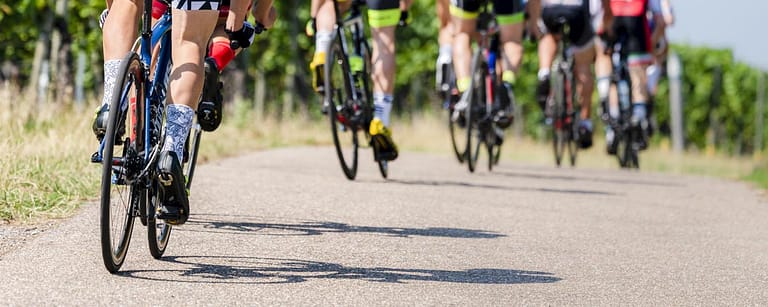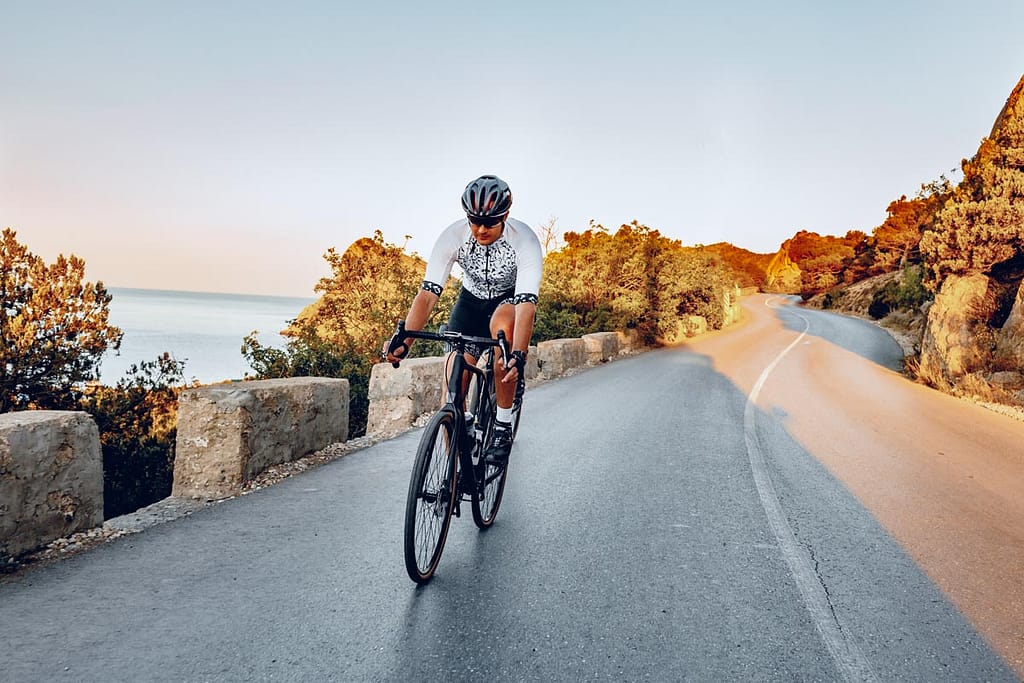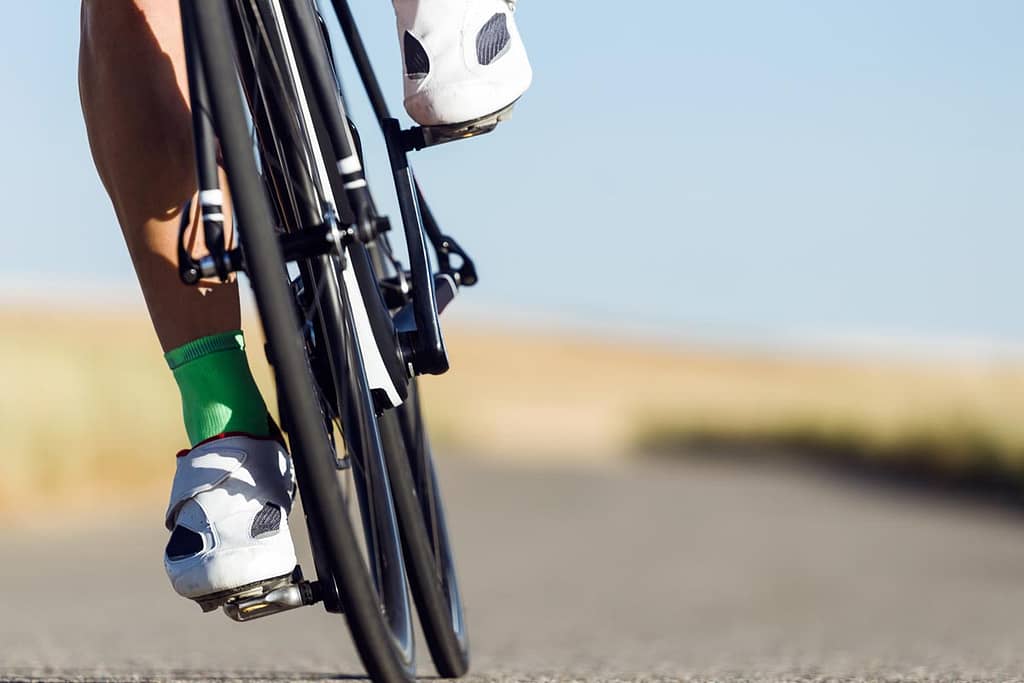Olympic Road Cycling: Skillful Sport of Speed and Strategy
Road cycling is a thrilling sport that combines speed, endurance, and strategy. And when it comes to the Olympics, road cycling takes center stage as one of the most exciting events. In this article, we’ll dive into Olympic road cycling. We’ll explore what makes it so captivating.

The Basics of Road Cycling: What You Need to Know
Before we get into the nitty-gritty of Olympic road cycling, let’s cover some basics. Road cycling is all about riding a road bike on paved roads. The bikes are for speed and efficiency. They have lightweight frames. The frames are made from materials like carbon fiber, aluminum, titanium, or steel. They also have narrow tires. They have drop handlebars and multiple gears. These help riders ride on many terrains and conditions.
The Different Types of Road Cycling Races
Road cycling races come in several types. Each type has its own unique challenges and strategies. Here are a few of the most common:
- Criterium: A short, fast-paced race on a closed circuit course, usually lasting an hour or less.
- A Time Trial is an individual race against the clock. Riders start at intervals and try to finish the course as fast as possible.
- A stage race is a multi-day event. It consists of several races, or stages. The overall winner has the lowest total time.
- The Grand Tour is the most prestigious stage races. These races include the Tour de France, Giro d’Italia, and Vuelta a España. They last around three weeks and cover thousands of kilometers.
Olympic Road Cycling: A Brief History
Road cycling has been a part of the Olympic program since the first modern Games in Athens in 1896. Initially, only men competed in road cycling events. But, women’s races were introduced at the 1984 Los Angeles Olympics. Over the years, the sport has evolved. This has been due to advances in technology, training, and race strategies.
The Thrilling Road Race at the Olympics
The Olympic road race is a mass-start event. Riders compete over a tough course. It often has climbs, descents, and tough sections. The race typically covers around 250 kilometers for men and 140 kilometers for women. Riders employ various tactics throughout the race, such as:
- Drafting: Riding closely behind another rider to reduce wind resistance and conserve energy.
- Paceline: A group of riders taking turns at the front to maintain a high speed and share the workload.
- A breakaway happens when one or more riders attack and separate from the main group, or peloton. They do this in an attempt to win the race.
- Sprint: A high-speed finish where riders compete for the win in the final few hundred meters.
The Challenging Time Trial at the Olympics
The Olympic time trial is a solo race against the clock. Riders start at intervals and aim to finish the course as fast as possible. The course is usually shorter than the road race, about 40-50 kilometers. Riders must keep a high pace throughout. Things like aerodynamics, pacing, and power affect time trial performance. They are crucial.
Iconic Olympic Road Cycling Moments
Olympic road cycling has produced some unforgettable moments over the years. Here are a few highlights:
At the 1960 Rome Olympics, Soviet rider Viktor Kapitonov wins the road race. He did so after a solo breakaway. He is the first Soviet cyclist to win an Olympic gold medal.
In 1984 in Los Angeles, rider Connie Carpenter-Phinney won. She was the first American woman to win a road race. She won in a thrilling sprint finish.
- In 2012 in London, Kazakhstan’s Alexander Vinokourov won the men’s road race. It was his final season before retirement. He outsprinted Colombia’s Rigoberto Urán in a two-man breakaway.

Top Olympic Road Cyclists of All Time
Many legendary cyclists have left their mark on Olympic road cycling. Some of the most notable include:
Eddy Merckx is from Belgium. He won gold in the road race at the 1964 Tokyo Olympics. He is widely considered one of the greatest cyclists of all time.
Jeannie Longo (France) competed in seven Olympic Games from 1984 to 2008. She won gold in the road race at the 1996 Atlanta Olympics.
Fabian Cancellara (Switzerland) won gold in the time trial at the 2008 Beijing. He also won in 2016 in Rio. Also, he won silver in the 2008 road race.
The Science Behind Road Cycling Performance
Road cycling performance is influenced by a complex interplay of factors, including:
Riders need high VO2 max, lactate threshold, and power-to-weight ratio. These traits help them excel in endurance cycling.
Training programs are effective when they mix endurance, intervals, and recovery. This mix optimizes performance.
Nutrition and Hydration are crucial. You need proper carbs, protein, and electrolytes. They sustain energy and prevent fatigue.
Equipment has advanced. This is thanks to improvements in bike technology. These include aerodynamic designs and lightweight materials. They can provide a competitive edge.

Preparing for a Road Cycling Race: Tips and Tricks
If you’re inspired to take on a road cycling race yourself, here are some tips to help you prepare:
- Build a strong base: Do endurance training. It will build your aerobic fitness
- Incorporate intervals: Include high-intensity interval workouts to improve your power and speed.
- Practice climbing and descending. Master the skills for going up and down hills to tackle tough courses.
- Dial in your nutrition. Experiment with different strategies during training. Find what works best for you on race day.
- Recover well. Focus on methods like stretching, foam rolling, and enough sleep. They prevent injury and boost performance.
Road cycling is a sport that requires dedication, discipline, and a love for the open road. And when it comes to the Olympics, the sport takes on a whole new level of excitement and prestige.

